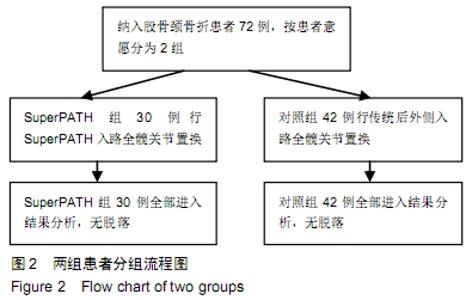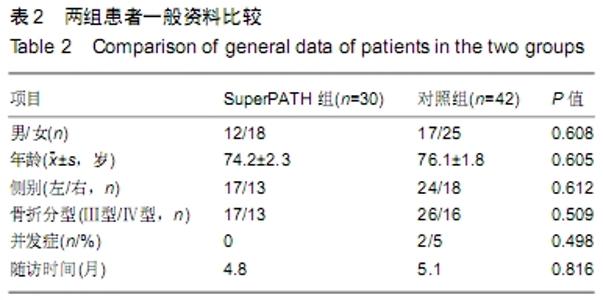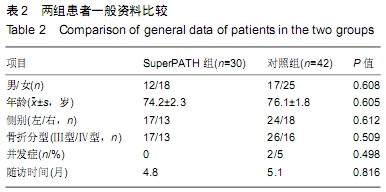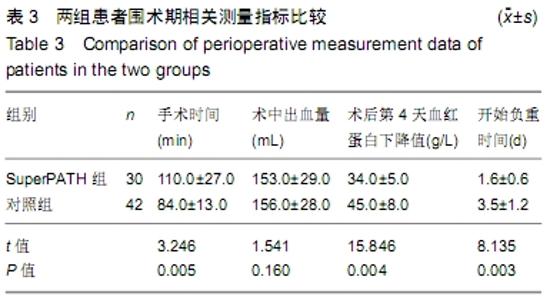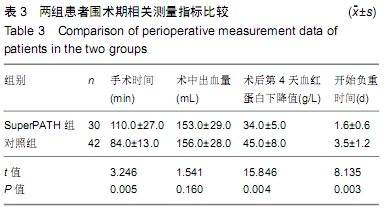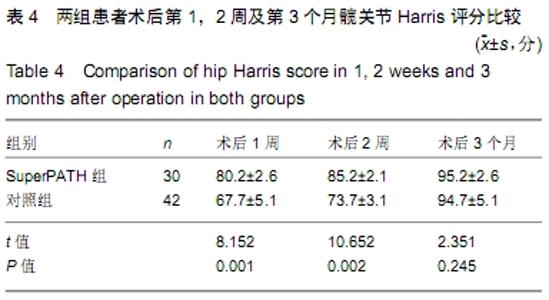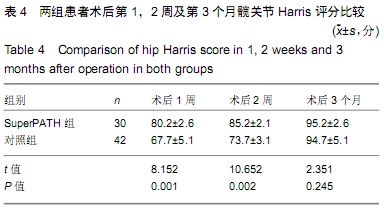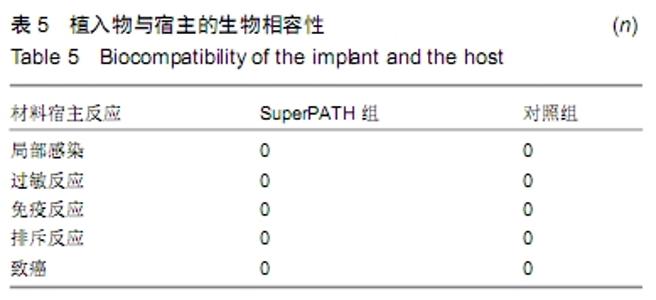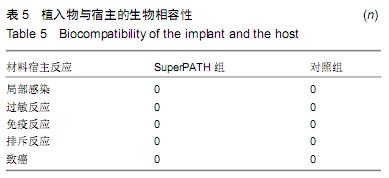[1] HAUER G, HERI A, KLIM S, et al. survival rate and application number of total hip arthroplasty in patients with femoral neck fracture: an analysis of clinical studies and national arthroplasty registers. J Arthroplasty. 2019.
[2] DORR LD, MAHESHWARI AV, LONG WT, et al. Early pain relief and function after posterior minimally invasive and conventional total hip arthroplasty. A prospective, randomized, blinded study. J Bone Joint Surg Am. 2007;89(6): 1153-1160.
[3] BAL BS, HALTOM D, ALETO T, et al. Early complications of primary total hip replacement performed with a two- incision minimally invasive technique . J Bone Joint Surg Am. 2005; 87(11): 2432-2438.
[4] SPERANZA A, IORIO R, FERRETTI M, et al. A lateral minimal- incision technique in total hip replacement: a prospective, randomizes, traditionalled trial. Hip Int. 2009; 17(1): 4-8.
[5] PAILLARD P. Hip replacement by a minimal anterior approach . Int Orthop. 2007; 31(Suppl 1): S13-S15.
[6] MURPHY SB, TANNAST M. Conventional vs minimally invasive total hip arthroplasty. A prospective study of rehabilitation and complications. Orthopade. 2006;35(7): 761-764, 766-768.
[7] PENENBERG BL, BOLLING WS, RILEY M. Percutaneously assisted total hip arthroplasty (PATH): a preliminary report. J Bone Joint Surg Am. 2008; 90(Suppl 4): 209-220.
[8] CHOW J, PENENBERG B, MURPHY S. Modified micro- superior percutaneously-assisted total hip: early experiences & case reports. Curr Rev Musculoskelet Med. 2011; 4(3): 146-150.
[9] CHOW J. SuperPath: the direct superior portal-assisted total hip approach. JBJS Essent Surg Tech. 2017;7(3):e23.
[10] PANG Y, ZHENG X, PEI F, et al. a retrospective study to compare the efficacy and postoperative outcome of total hip arthroplasty with internal screw fixation in patients with avascular necrosis of the femoral head. Med Sci Monit. 2019; 25:3655-3661.
[11] SUMMERS S, GRAU LC, MASSEL D, et al. trends in utilization of total hip arthroplasty for femoral neck fractures in the United States. Am J Orthop (Belle Mead NJ). 2018;47(12). doi: 10.12788/ajo.2018.0103.
[12] TANZER M, GRAVES SE, PENG A, et al. is cemented or cementless femoral stem fixation more durable in patients older than 75 years of age? A comparison of the best-performing stems. Clin Orthop Relat Res. 2018;476(7): 1428-1437.
[13] JAMSEN E, ESKELINEN A, PELTOLA M, et al. High early failure rate after cementless hip replacement in. the octogenarian. Clin Orthop Relat Res. 2014; 472(9): 2779-2789.
[14] DELLA TORTE PK, FITCH DA, CHOW JC. Supercapsular percutaneously-assisted total hip arthroplasty: radiographic outcomes and surgical technique. Ann Transl Med. 2015; 3(13):180.
[15] GOFTON W, FITCH DA. In- hospital cost comparison between the standard lateral and supercapsular percutaneously-assisted total hip surgical techniques for total hip replacement. Int Orthop. 2016; 40(3):481-485.
[16] MAYR E, NOGLER M, BENEDETTI MG, et al.A prospective randomized assessment of earlier functional recovery in THA patients treated by minimallyinvasive direct anterior approach:a gait analysis study. Clin Biomech. 2009; 24(10): 812-818.
[17] QURASHI S, CHINNAPPA J, LORD SJ, et al. driving after microinvasive total hip arthroplasty. J Arthroplasty. 2017; 32(5):1525-1529.
[18] MITCHELL RJ, KAY AB, SMITH KM, et al. Early results of displaced femoral neck fragility fractures treated with supercapsular percutaneous-assisted total hip arthroplasty. Arthroplast Today. 2019;5(2):193-196.
[19] DELLA TORRE PK, FITCH DA, CHOW JC. Supercapsular percutaneously-assisted total hip arthroplasty: radiographic outcomes and surgical technique. Ann Transl Med. 2015; 3(13):180.
[20] YAN T, TIAN S, WANG Y, et al. Comparison of early effectiveness between SuperPATH approach and Hardinge approach in total hip arthroplasty. Zhongguo Xiu Fu Chong Jian Wai Ke Za Zhi. 2017;31(1):17-24.
[21] 张涵,兰海.微创全髋关节围置换期应用重组人促红细胞生成素联合氨甲环酸[J].中国组织工程研究,2018,22(1):1003-1008.
[22] CRONIN MD, GOFTON W, ERWIN L, et al. Early surgical and functional outcomes comparison of the supercapsular percutaneously-assisted total hip and traditional posterior surgical techniques for total hip arthroplasty: protocol for a randomized, controlled study. Ann Transl Med. 2015;3(21): 335.
[23] RASULI KJ, GOFTON W. Percutaneously assisted total hip (PATH) and Supercapsular percutaneously assisted total hip (SuperPATH) arthroplasty: learning curves and early outcomes. Ann Transl Med. 2015;3(13):179.
[24] BARRETT AA, EZZIBDEH RM, HORST PK, et al. Direct superior approach to the hip for total hip arthroplasty. JBJS Essent Surg Tech. 2019;9(2):e17.
[25] OUYANG C, WANG H, MENG W, et al. Randomized controlled trial of comparison between the SuperPATH and posterolateral approaches in total hip arthroplasty. Zhongguo Xiu Fu Chong Jian Wai Ke Za Zhi. 2018;32(12):1500-1506.
[26] BODROGI AW, SCIORTINO R, FITCH DA, et al. Use of the supercapsular percutaneously assisted total hip approach for femoral neck fractures: surgical technique and case series. J Orthop Surg Res. 2016;11(1):113.
|
